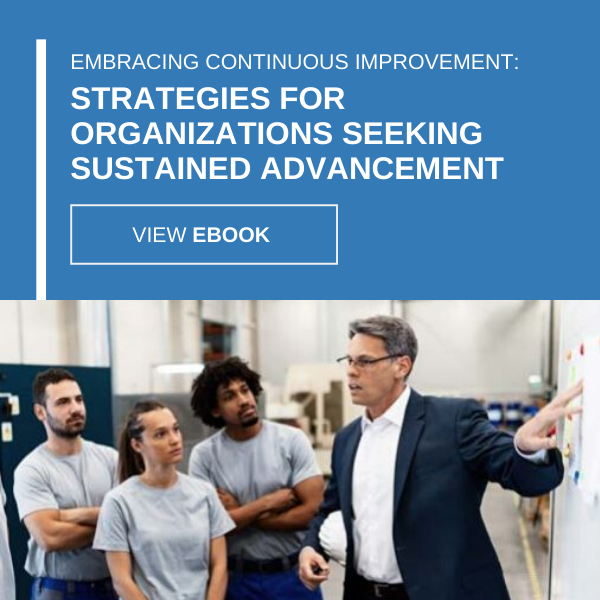
6 Tactics for Process Improvement Sustainability After the Job Is Done
When you hire a consulting firm, you expect recommendations, changes, process improvements and a healthy return on your investment. In short, you want your company to be more efficient and profitable when the consultants walk out the door than it was when they walked in. Right? That should be a given.
But, what happens when the project is finished, when the consultants are not there to guide the process going forward? The answer to that question is process improvement sustainability and is a key element USC Consulting Group specializes in.
The aftermath: Preparing clients for sustainability
At USC Consulting Group, operations consulting is what we do. Companies bring us in to look at their operations with a fresh set of eyes, leveraging best practices we’ve learned in our half century (and counting) in the business. We’re not party to office politics and other company red tape, and as such, we’re able to make recommendations for necessary changes, process improvements, and operating and management system overhauls to get the company functioning optimally.
Increasing throughput and yield, reducing excess costs, identifying and eliminating waste — these are some of our areas of expertise. But, at USC, there’s one thing we DON’T do. We do not set it and forget it.
That’s one aspect of our approach that sets us apart from our competitors out there. We play the long game. We don’t swoop in, offer solutions and swoop out, leaving clients on their own. We deliver results that our clients can maintain. We make sure the positive changes we’ve helped companies enact will stick, long after we’re not walking through the door every day. It’s the whole “give a man a fish vs. teach him how to fish” philosophy. It’s our goal to give clients the tools to keep it going. Here’s how we do it:
1. Employee involvement. This needs to start from Day One. It’s hard to overstate how critical employee involvement is while the project is happening, and after it’s complete. We use “daily huddles” with team members to engage on things like scheduling, production, maintenance, quality, project status and much more. We do best practice skills. We review KPIs. The whole idea is to give team members the tools to continue successful operations and maintain the results we’ve achieved together.
2. Action items. Throughout our process, we will regularly identify action items, steps that need to take place going forward. We’ll get agreement on these and hold people accountable for success. It helps set them up for continued success after the project is finished.
3. Managing change management. We say it often — we can effect all the change in the world. But if we don’t manage that change correctly, none of it will stick. We’ve become experts in effective change management over the years. A few pearls of wisdom we’ve picked up along the way: Operational changes require behavioral changes. Employees, especially longtime employees, don’t necessarily love that. People need reassurance their jobs aren’t disappearing. Also, it’s extremely useful to recruit “advocates” on the front lines who can champion the changes we’re implementing. And it’s vital to be clear on the “why” of any changes put forth. Read more about it in “8 Change Management Best Practices to Ensure Sustainability” on our blog.
4. General training. We develop education and training for “in the field” work for team members, supervisors, leads and managers to support the Management Operating System changes being made by the team as well as supporting behavioral change management — also a critical part of the process. People need to do their jobs differently. Sometimes radically differently. And it can be a stumbling block for employees who may be resistant to change. The training gives them the skills to keep progress going.
5. Lean Six Sigma training. It’s a pretty safe bet you don’t have a Lean Six Sigma Master Black Belt on your staff currently. No problem. We do. One of the most effective ways to create lasting process improvements out there, Lean Six Sigma is the combination of two manufacturing methodologies, Lean, which is focused on eliminating waste and reducing process lead times and Six Sigma, which focuses on cutting down on defects and improving quality. But it takes a lot of study to get it right. That’s why we choose team members to train in this highly effective tool so our efforts using it to increase efficiency and decrease defects are sustainable. Read all about Lean Six Sigma in our eBook, “Lean Six Sigma: Do You Really Know These Methodologies?”
6. Toolkit. This is a playbook of what we’ve done on the project, successes we have achieved, steps forward, sustainable practices and more. It’s a detailed, workable plan that outlines how to go forward and build on that success.
All of these tactics work in tandem to ensure process improvement sustainability, so companies remain firing on all cylinders now and into the future. But, that’s not all. We may not be on site every day after a project is completed, but we’re always just a phone call away. We play the long game with our clients and perform audits to ensure sustained results. Setting and forgetting isn’t part of our playbook. Never has been. Never will be.






